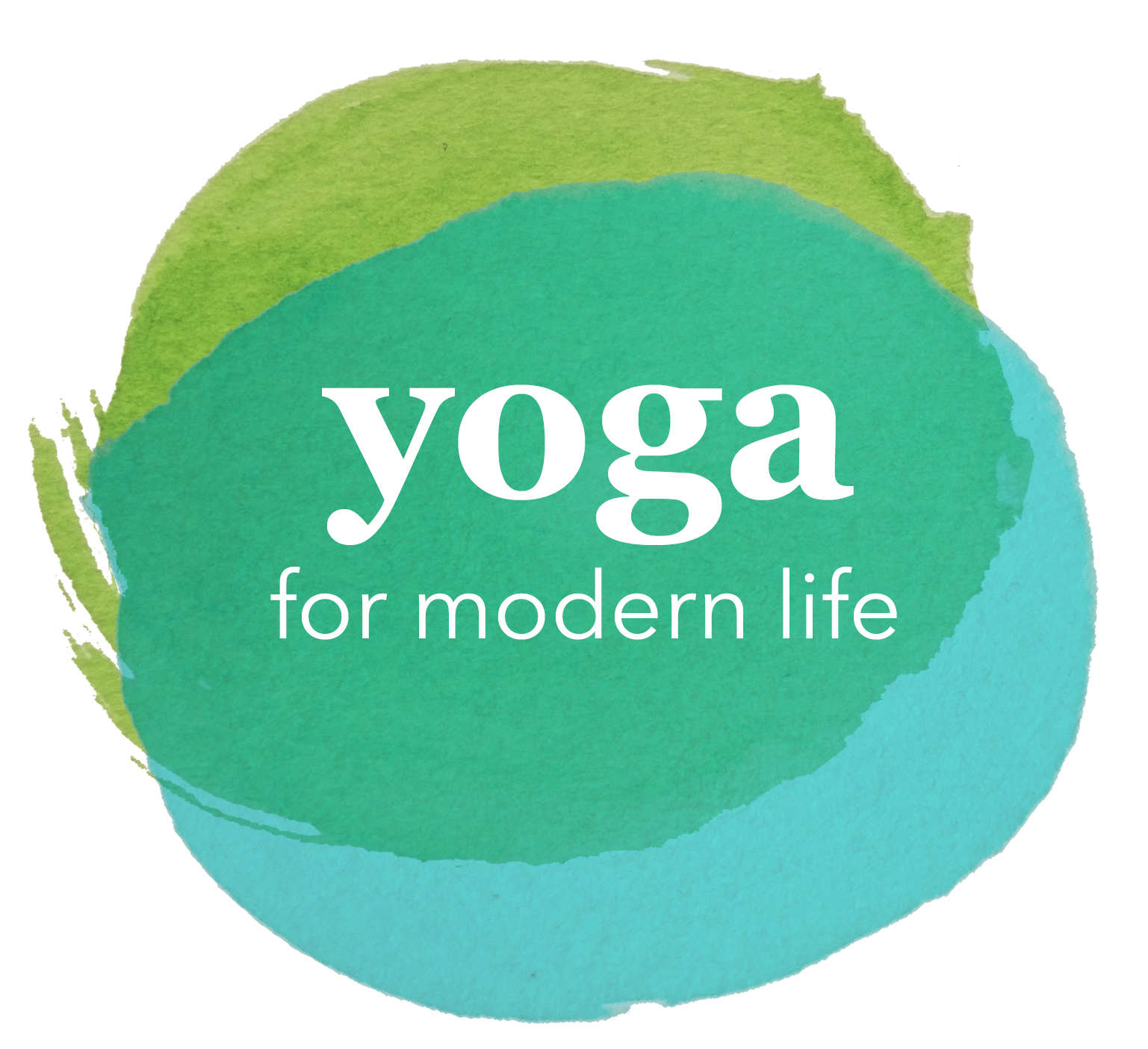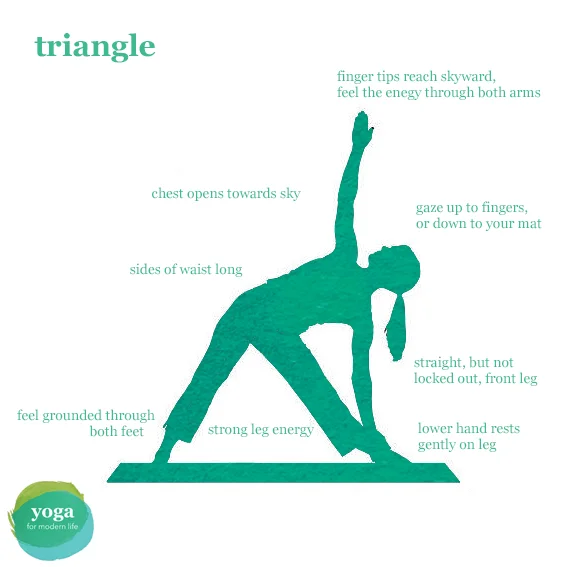Pose Guide - Triangle
Triangle is a standing pose we often do in yoga classes, but it is deceptively challenging. Here are some tips so you can reap maximum benefit from your triangle pose practice.
1. How wide should my stance be?
Here’s a tip for finding your ideal triangle stance. Begin by taking a stance that feels reasonably wide to you, and then extend your arms out to a “T” shape. If you were to drop a plumb line down from each wrist, you would want your ankles to be at the bottom of those plumb lines. With that in mind, walk your feet in or out accordingly. If you find that you’re losing your balance, shorten your stance and work toward widening it over time.
From here, simply turn out what will now become your front foot. Then turn your back toes in a little, aligning your feet so that an imaginary line running from your front heel bisects the inner arch of your back foot. Most importantly, make sure you feel grounded and stable through the legs and feet. If not, adjust.
2. How do I keep my front knee from hyperextending or locking out?
Once in the stance, imagine you are trying to pull your shin up towards your body. In reality you can't do this. but by having that feeling you will prevent your knee from locking out and keep it safe.
3. How do I move into the pose?
From your starting position with the legs wide (as described above), extend your arms out at shoulder height. Lengthen up through the sides of your waist, you want to feel as though you’re lifting your rib cage up away from your pelvis. Then, as you reach out to the side to move into triangle, retain as much length in the front side of the body as you possibly can. When you feel that you can no longer maintain that length, stop reaching to the side bend to place your right hand wherever it lands on your leg.
Don’t sacrifice that length in the body in order to get your hand closer to the floor.
4. What do I do with my bottom hand?
Gently place your hand on your leg, making sure you’re not supporting your weight by pushing your hand into your leg (which puts too much pressure on the front leg). You want to be able to lift your hand off your leg at any point and still remain in the pose.
Open the palm of the hand so that the thumb points in the same direction as your right foot. Opening the palm in this way encourages the upper chest and shoulder area to open as well. If you turn the hand so that the thumb faces inward toward the right leg, it could lead you to unintentionally rotate the shoulder inward.
5. And my top hand?
Reach the top hand up towards to the sky, opening your heart and chest, and feeling your energy along both arms right to the finger tips. Keep your shoulders down away from your ears and your neck long.
6. What about my head?
When you’re in triangle, begin by looking straight ahead. From there, if you’d like to turn your head to look up, imagine your head as a planet and the axis of rotation as straight down the middle—then rotate your head to look up.
Turning your head in triangle pose should create no extra tension. Finding and maintaining an imaginary axis—from the center of your face down to the center of your sternum—and then turning your head, can make looking up toward your hand in triangle a lot more comfortable.
7. And my hips?
Triangle pose is about the feeling of opening the hips - energetically, not necessarily literally. Instead of trying to perfectly stack your hips on top of each other, focus more on the relationship between the top hip and your front inner leg. If you both maintain length on the lower side of your waist and protect the structure of your front knee, you probably won’t be able to roll your top hip all the way back. The top hip will naturally roll forward a tiny bit.
Try this: Once you’re in the pose, bend your front knee for a moment. Then with equal effort, simultaneously straighten your front leg again AND open out your top hip, returning to your triangle shape. Use as much energy to open the hip as you do to extend your leg (without disturbing the alignment of your front knee). If the front knee experiences discomfort or confusion, don’t open the top hip so much.
So thats my guide to what to do with your legs, your head, your hips, and your hands in Triangle pose., which should make hopefully make Triangle a little less tricky!
As you incorporate these tips into your practice, finding length and strength in your triangle pose, I hope you'll find greater steadiness and ease on the mat overall.

